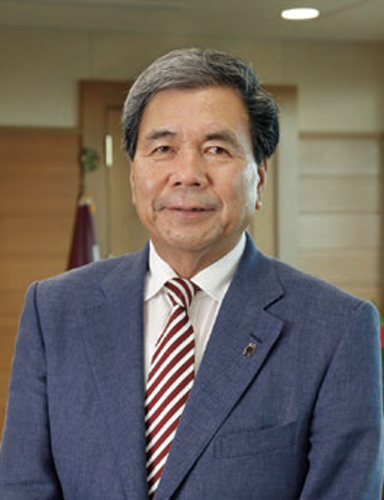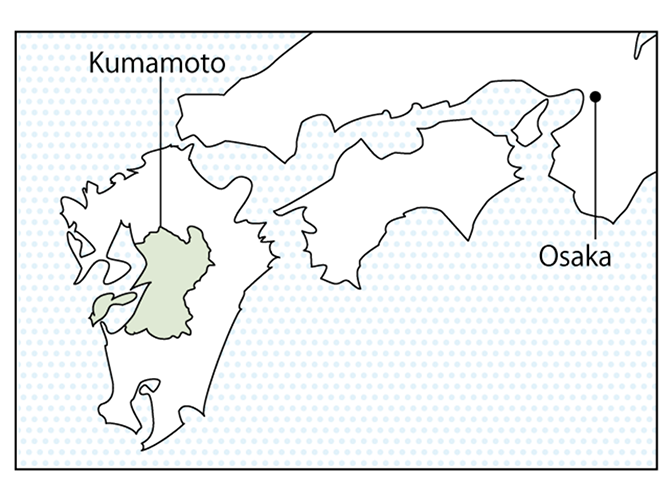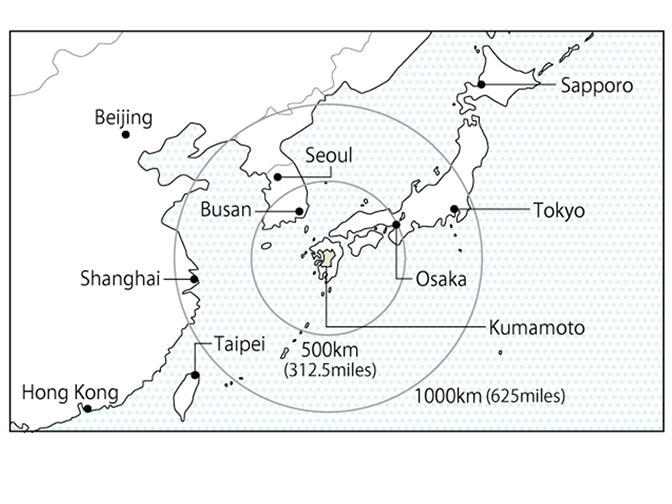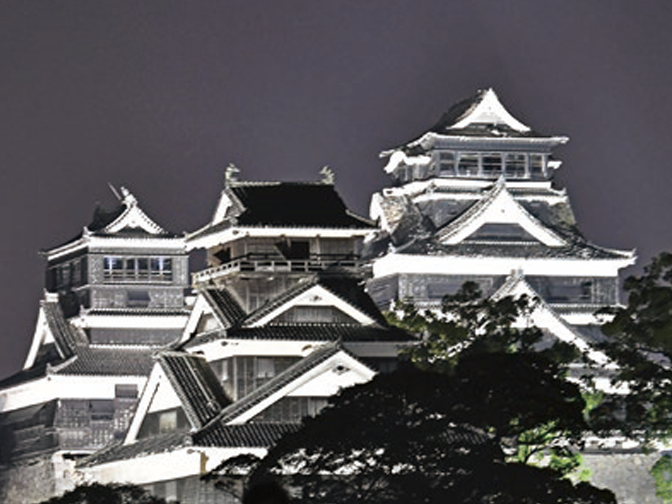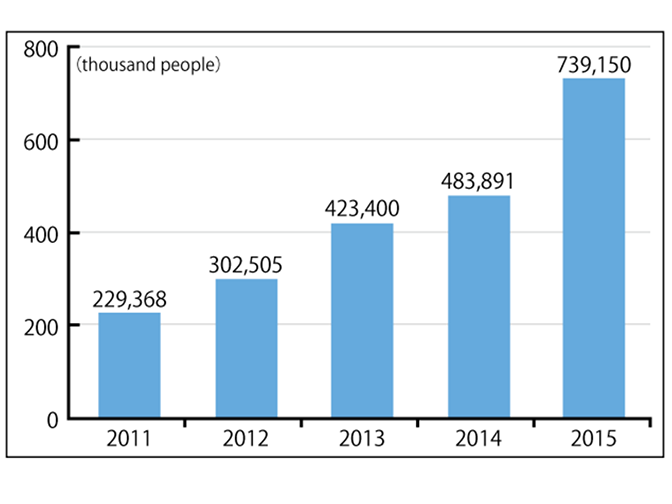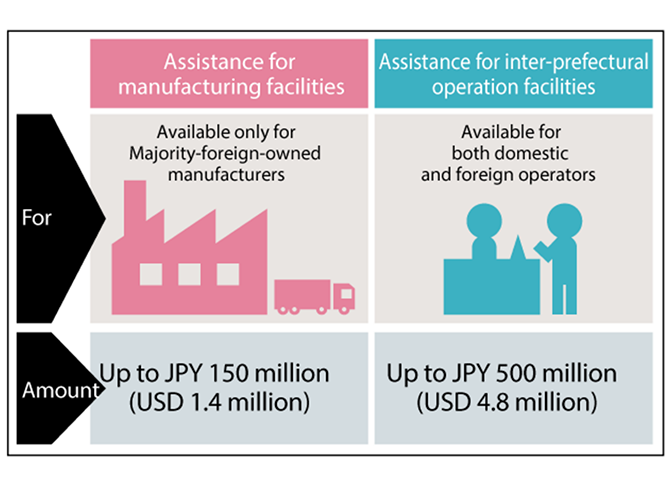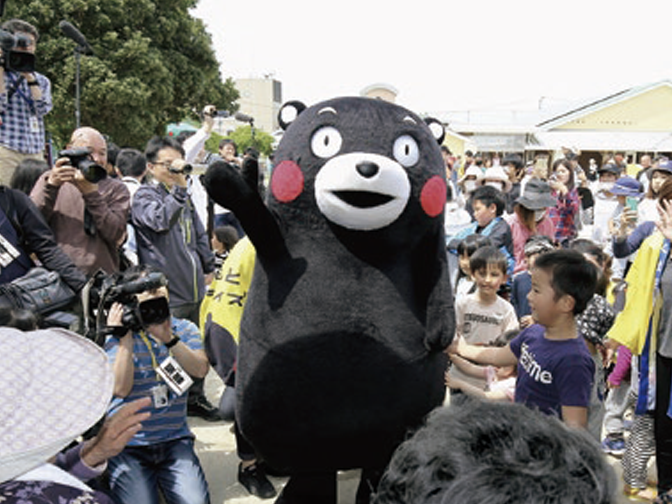Governor Ikuo Kabashima
Born in 1947. Received his Ph.D. in political economy and government from Harvard University in 1979. Taught as a professor at the University of Tsukuba and from 1997 at the Graduate School of Law and Politics, University of Tokyo, where he is now professor emeritus. Governor of Kumamoto Prefecture since 2008.
Kumamoto Prefecture, located in the central part of the island of Kyushu, has long been an administrative and economic hub. The prefecture has been energetically promoting industrial investment, and it is now home to numerous research and production facilities for the semiconductor and automobile industries. Thanks to its good access by air and sea to China, South Korea, and other Asian countries, companies from places such as the United States, Taiwan, and New Zealand have set up operations here in Kumamoto.
Kumamoto’s prefectural government has been promoting investment by companies from elsewhere in Japan and abroad with a variety of incentives. Majority-foreign-owned manufacturing companies can receive up to JPY 150 million (USD 1.4 million) in financial assistance for setting up operations in the prefecture; up to JPY 500 million (USD 4.8 million) is available as assistance for setting up inter-prefectural operation facilities such as regional headquarters and call centers. The prefecture also has investment promotion offices in Shanghai and Singapore to support companies considering setting up operations in Kumamoto.
The prefecture is also known as a place where it is easy to find talented human resources in scientific fields. It is the site of Kumamoto University, a national university, and other universities with scientific and engineering departments that altogether produce about 6,000 graduates in these fields every year. There were 735 international students as of 2015, and the prefecture is actively helping them find post-graduation jobs with Japanese companies.
Kumamoto is rich in tourist attractions, including Kumamoto Castle, the symbol of the prefecture’s capital city, the giant caldera of Mount Aso, which is registered as a UNESCO Global Geopark, and Amakusa, consisting of some 120 islands of various sizes. The prefecture is eagerly promoting tourism, and its mascot “Kumamon,” which has many international fans, encourages people to visit Kumamoto. Kumamon’s activities have extended around the world, including publicity campaigns in cities around Asia and participation in events held in France and the United States. According to a survey by the prefectural government, this mascot generated more than JPY 100 billion (USD 950 million) in sales of related goods in 2015.
In April 2016, Kumamoto was struck by a series of devastating earthquakes registering up to magnitude 7.3. The government and private sector responded with massive restoration efforts, and the Kyushu Shinkansen high-speed railway and the Kyushu Expressway were reopened in short order.
Prefectural Governor Ikuo Kabashima declares, “We want to promote the further development of the prefecture not just by restoration of the pre-quake state but also through creative reconstruction aiming to “Build Back Better.” For example, we are accelerating work on the Naka-Kyushu Odan Road and Kyushu Chuo Expressway, which serve as Kyushu’s east-west artery.”
To support the reconstruction drive, in July the government launched a system providing discounts of up to 70% for accommodations and other travel expenses. People in other countries can take advantage of this by purchasing travel packages including overnight stays in Kumamoto through hotel reservation websites and travel agencies.
Governor Kabashima adds, “I express heartfelt gratitude for the outpouring of warm support for Kumamoto from overseas in the wake of the earthquake. We would like to respond by extending our hospitality. I urge people to visit Kumamoto; by doing so, they will be giving encouragement to the people of the prefecture.”
Basic facts and figures
Kumamoto Prefecture has a population of 1.78 million. With a warm climate, it is one of Japan’s top farming prefectures. Recently Kumamoto has attracted a lot of attention as a destination of business and tourism.
Easy access to major Asian cities
Kumamoto, in central Kyushu, is close to destinations such as South Korea, China, and Taiwan, and is favored as a base for production, logistics, and sales.
Foreign visitors
The number of foreign visitors who stayed overnight at lodgings in Kumamoto Prefecture rose from about 480,000 in 2014 to 740,000 in 2015, the largest increase on record.
Source: Kumamoto Prefecture tourism statistics (The figure for 2015 is preliminary, based on a statistical survey by the Japan Tourism Agency.)
Incentives for companies setting up operations
Kumamoto has established particularly generous incentives for foreign firms setting up operations and has been striving to improve its support services.































































































































